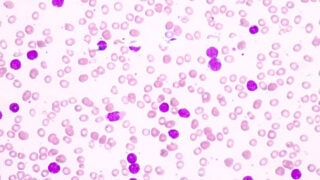Discovery involving sodium could lead to safer painkillers such as fentanyl
A study by USC scientists and colleagues shows a potential new way to make the nation’s deadliest painkiller, fentanyl, safer.
One of the most abundant elements on Earth — sodium — may hold the key for scientists to develop opioids or other drugs with far fewer side effects.
In a study published Wednesday by Nature, scientists from USC, Washington University in St. Louis and Stanford University demonstrated that by chemically linking fentanyl to the sodium pockets that exist within nerve cell receptors, they could block the drug’s harmful side effects and still reduce pain.
Further study is needed, but the results hold promise — not just for drug development but also for addressing the nation’s crisis of addiction and overdose. Nearly 70,000 Americans died in 2020 of an opioid overdose — most of them from the synthetic opioid fentanyl, according to the National Institute on Drug Abuse. In the 1990s, the Food and Drug Administration approved the use of fentanyl to ease severe pain in cancer patients but it has since made its way into the streets, worsening the national crisis of opioid abuse.
“In its current form, fentanyl is like a weapon of mass destruction,” said Vsevolod Katritch, a computational scientist at the Bridge Institute at the USC Michelson Center for Convergent Bioscience and a corresponding author of the study. “Our new collaborative work suggests that we could redesign the drug in such a way that we convert this frequent overdose killer to a much more benign but still effective analgesic.”
Drugs of all kinds are designed to target certain receptors on nerve cells known as GPCRs (G protein-coupled receptors), which act as signal transmitters. These receptors are like switches that mediate a drug’s intended effect on the brain and body, but also the unintended side effects. In the case of fentanyl, the most potent painkiller of all opioids, patients may suffer addiction and may die from respiratory arrest.
Research involving the sodium mechanism
Katritch noted that he and his fellow scientists Ray Stevens and Vadim Cherezov at the Bridge Institute and the USC Dornsife College of Letters, Arts and Sciences have been looking at the potential of the sodium mechanism since they first identified it within adenosine and opioid receptors about a decade ago.
Katritch and his collaborators said that although further study is needed to prove that their less harmful version of fentanyl will work in humans, the results have opened a new door for scientists to potentially improve the safety of painkillers.
“We are desperately looking for ways to maintain the analgesic effects of opioids, while avoiding dangerous side effects such as addiction and respiratory distress that too often lead to death,” said corresponding author Susruta Majumdar of Washington University in St. Louis. “Our research is still in its early stages, but we’re excited about its potential for leading to safer pain-relieving drugs.”
Beyond opioid receptors, noted Katritch, this work opens a new molecular design concept for dozens of other GPCRs where such functional conversion in existing drugs would be desirable.
Other study co-authors were 2012 Nobel laureate Brian Kobilka at Stanford Medicine, Georgios Skiniotis of Stanford University and Jay P. McLaughlin at the University of Florida.
The study was supported by grants from the National Institute on Drug Abuse and the National Cancer Institute of the National Institutes of Health. Grant numbers include R33 DA045884, R01 DA042888, R01 DA007242, R37 DA036246, R33DA 038858, P01 DA035764, R21 DA048650, R00 DA038725 and P30 CA008748. Additional funding provided by an American Heart Association Postdoctoral Fellowship, the Mathers Foundation, the Brain & Behavior Research Foundation and other funders.



